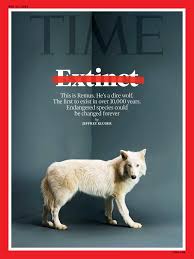The Dire Wolf: An Extinct Animal of North America

Introduction
The dire wolf, an iconic extinct animal that roamed North America during the late Pleistocene epoch, captures the imagination of paleontologists and trivia enthusiasts alike. Understanding the dire wolf is significant not only for its unique adaptations and ecological role but also for the insights it provides into how climate change and human activities can precipitate extinction. With its recent portrayal in popular media, the dire wolf continues to elicit keen interest and inquiry into its life, habits, and the reasons for its extinction.
The Dire Wolf’s Characteristics
The dire wolf (Canis dirus) was considerably larger than its modern relatives, such as the grey wolf. Weighing up to 130 pounds and standing about 2.5 feet at the shoulder, the dire wolf had strong jaws and large teeth designed to tear through the flesh of large prey. Its fossilised remains have been discovered in various locations, particularly in the La Brea Tar Pits of Los Angeles, where they provide a treasure trove of information regarding the animal’s physical characteristics and diet.
Habitat and Diet
During its existence, which spanned from approximately 250,000 years ago until roughly 10,000 years ago, the dire wolf inhabited a wide range of environments across North America, including grasslands, forests, and shrublands. This top-level predator primarily preyed on large herbivores such as bison and horses, though evidence suggests they may have scavenged as well. Remnants of dire wolf pack behaviour have been reconstructed, highlighting their complex social structures that likely played a role in hunting and territoriality.
Reasons for Extinction
The extinction of the dire wolf is still a subject of research and debate among scientists. One prevailing theory suggests that climate change at the end of the last Ice Age significantly altered the ecosystems they thrived in, leading to a decline in the availability of large prey species. Furthermore, competition with humans and other burgeoning predators could have exacerbated the dire wolf’s decline. The combination of these factors may have left the dire wolf unable to adapt sufficiently to survive.
Conclusion
The story of the dire wolf serves as a poignant reminder of the fragility of species in the face of environmental change. As our planet continues to confront unprecedented transformations in its climate and ecosystems, the extinction of the dire wolf urges us to reflect on the impact humans can have on biodiversity. Continued research into extinct animals like the dire wolf is not only essential for understanding our planet’s history but also crucial in informing conservation efforts to prevent the loss of today’s wildlife. The dire wolf may be long gone, but it remains a significant emblem of ecological balance and the consequences of disruption.






